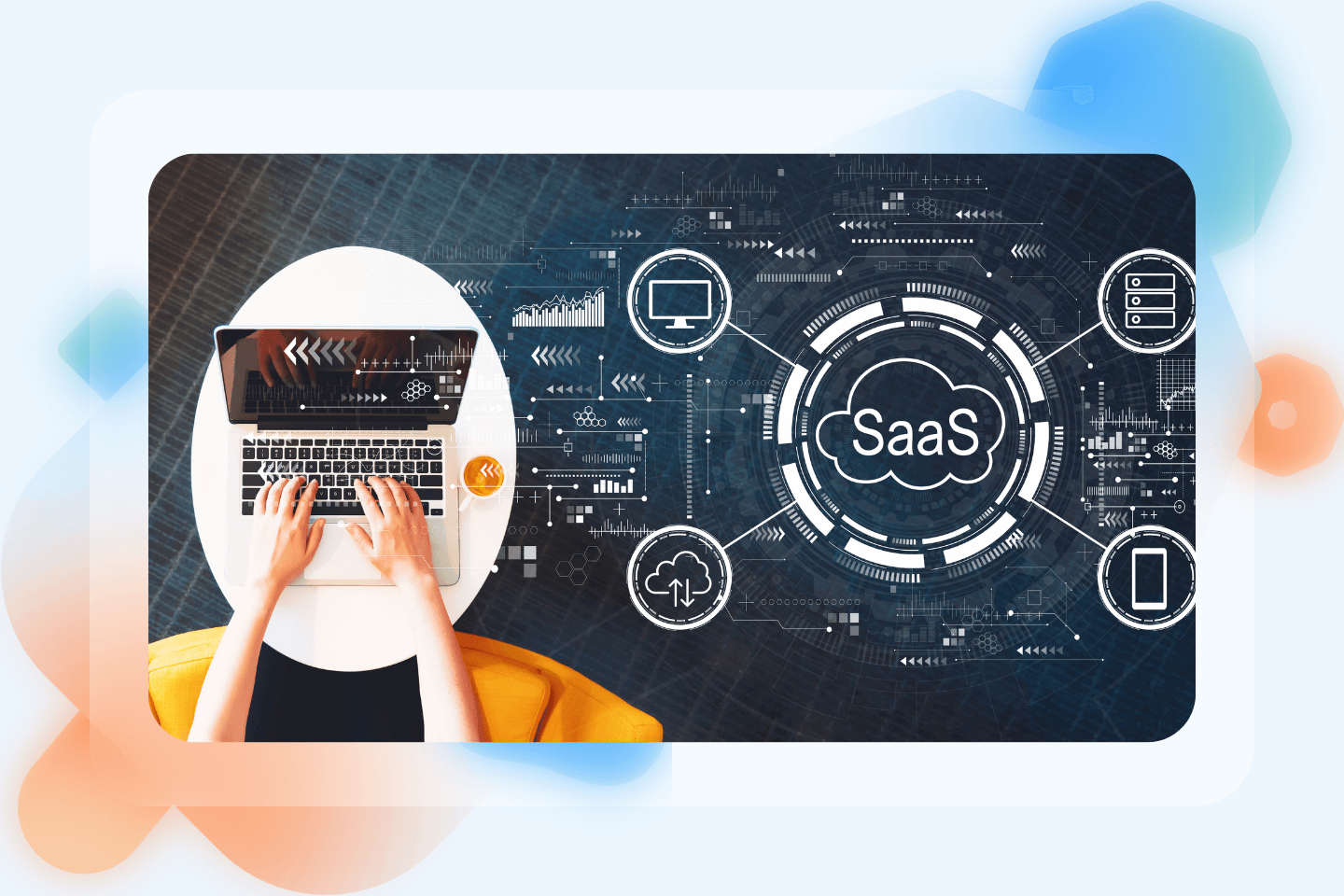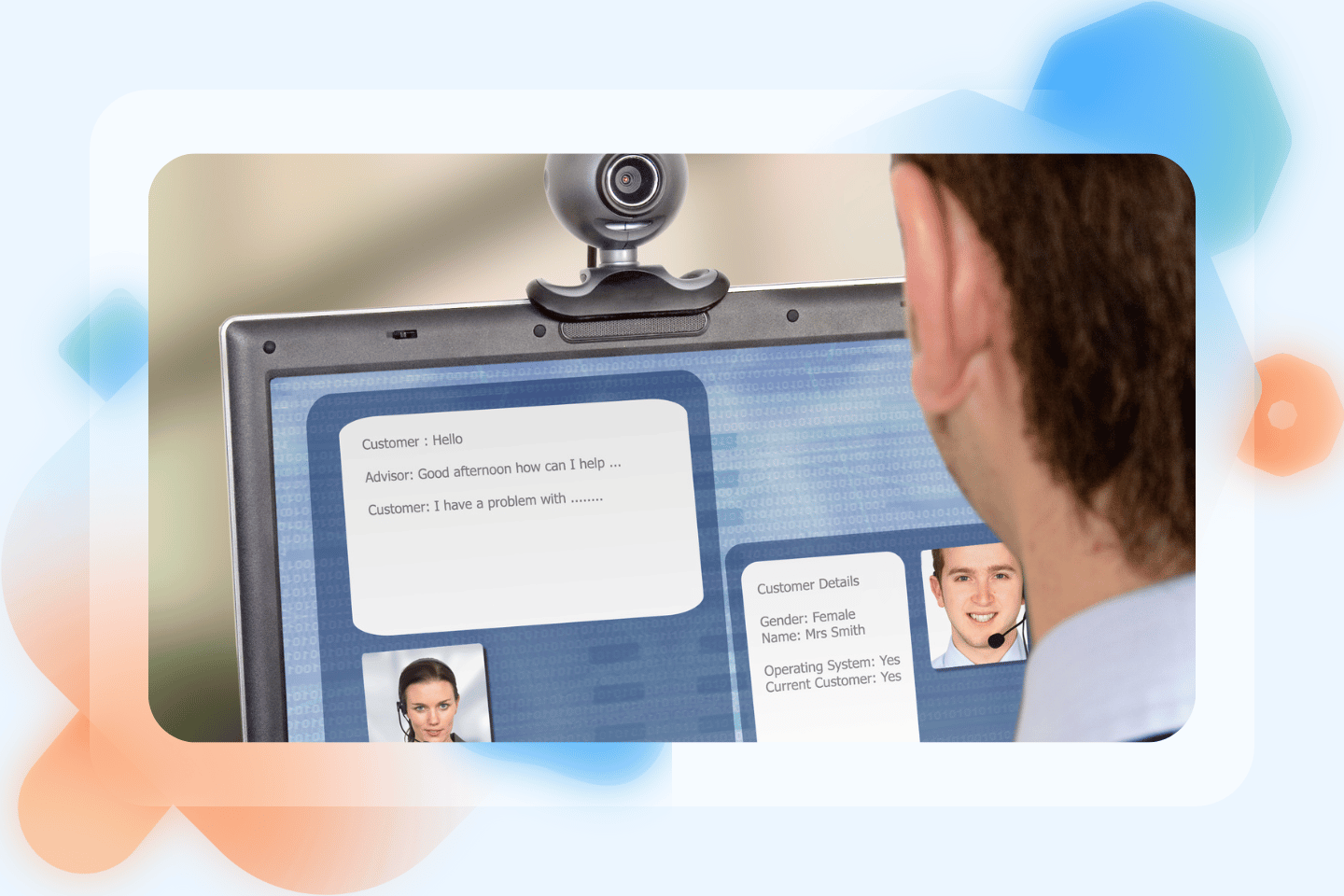The average annual churn rate of SaaS companies is 10% to 14%. To put that into perspective, the ideal customer churn rate should only be in the 2% to 8% range. If you’re finding yourself in the former range, it’s time to reevaluate the way you are conducting SaaS client onboarding.
In fact, poor onboarding experiences result in 23% of reasons for average customer churn.
The first major hurdle is always the learning curve your clients need to get through. While the pains of learning something new are unavoidable, you can actually make that experience more engaging.
So without further delay, it‘s time to refine and streamline your SaaS client onboarding process.
What is SaaS client onboarding?
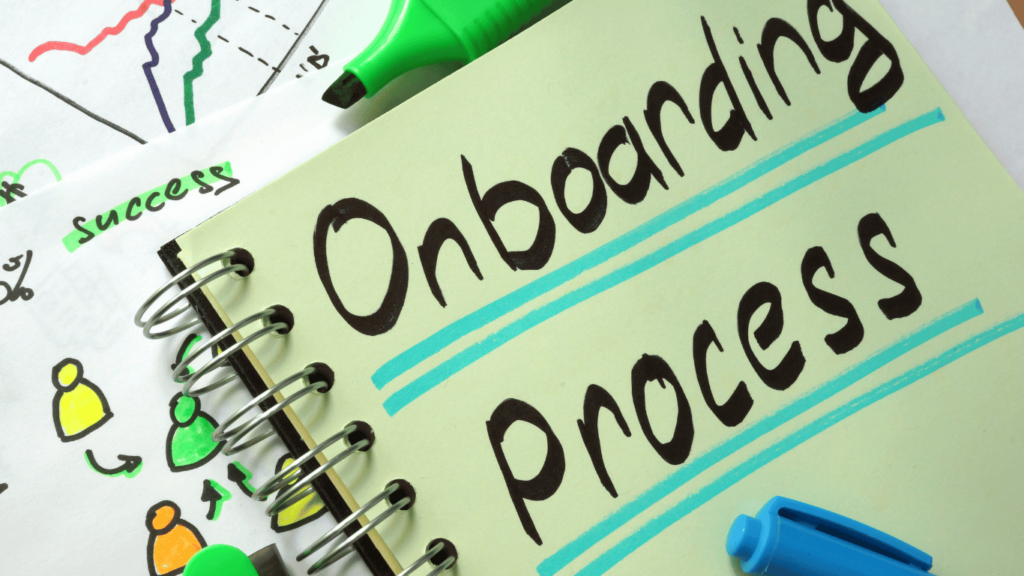
At its core, SaaS client onboarding is the process of welcoming and integrating new customers into your software ecosystem. It’s not a mere formality. It’s actually the first impression you make—and in the business world, first impressions matter.
Clients new to your SaaS product will need a sort of crash course, understandably. This is where you can walk your clients through your product. You would have a team or program guide them through how your product works. You can highlight key features, functions, and how they can be used to meet their specific needs.
During this phase, clients get acquainted with your software, its features, and how it can address their specific needs. It’s like helping them set up their ship, understand its controls, and ensure they have a smooth voyage ahead.
What’s at stake?
- Customer satisfaction: According to a survey by PwC, 32% of customers would stop doing business with a brand they loved after just one bad experience. SaaS client onboarding sets the tone for their entire journey. If it’s rocky, you might lose them early.
- Customer retention: Effective onboarding keeps clients engaged and less likely to jump ship. In fact, according to a recent survey, 63% of clients believe that the onboarding process can make or break their decision to continue subscribing to a product.
- Revenue growth: Happy clients are more likely to upgrade their subscriptions, leading to increased revenue. A study found that 10% of clients generate 70% of revenue.
- Referrals and reviews: A positive onboarding experience can turn clients into advocates. According to Nielsen, 92% of consumers trust recommendations from friends and family over other forms of advertising.
- Data security: Ensuring clients are well-versed in security protocols during onboarding reduces the risk of data breaches, which can be costly in both monetary and reputational terms.
Remember this key takeaway: client satisfaction and growth are the twin engines that power your success. And there’s no better way to kickstart this customer journey, than by mastering the art of SaaS client onboarding.
What happens during SaaS client onboarding?
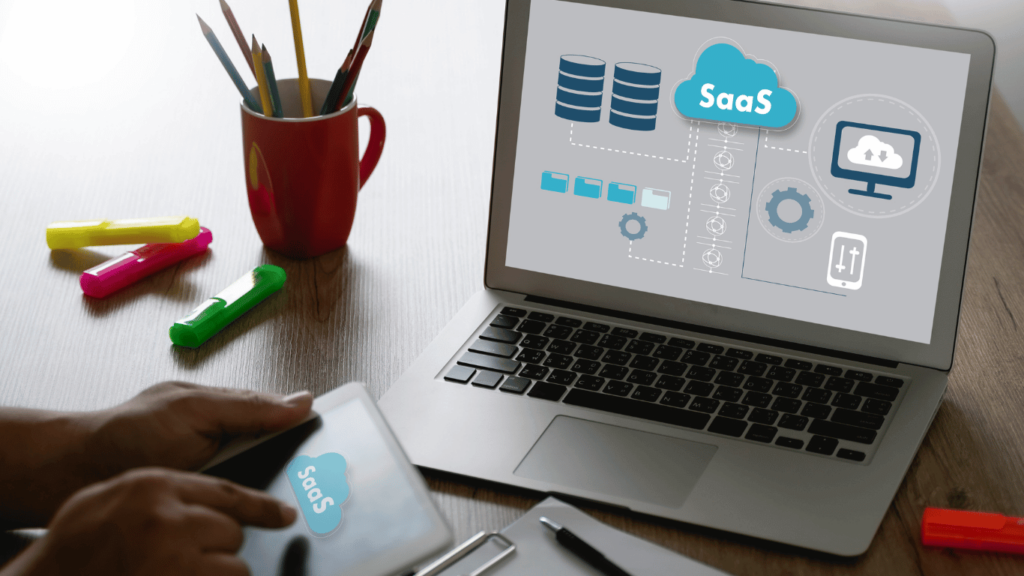
Initiation
Initiation is about setting the stage for a smooth onboarding process. This is when you send your client a personalized welcome message that will make them feel appreciated and excited about their journey with your software.
Data migration
The next stop is data migration which is like ensuring your cargo is securely loaded onto the ship. It’s important to conduct dry runs of the data migration to make sure there are no mishaps during the actual data migration. After the full migration, you must verify and validate your client’s migrated data to ensure complete data integrity.
Configuration and customization
In this step of the SaaS user onboarding, the software is tailored according to the client’s specific needs. This includes editing permissions, certain workflows, and automation. After all, you would want your client to have as much personalization when using your SaaS platform for a great customer experience.
Provision of educational materials
During the customer onboarding process, the client is still easing into the platform. Give your clients access to educational materials and tutorials. Create self-learning opportunities so your clients can learn to use your SaaS platform at their own pace.
The key information you should include in these materials is your product’s value to your client’s business. That should be incentive enough for them to pursue fluency with your product.
Integration with the client’s existing systems
If your client already has multiple systems, you’ll need to integrate your SaaS platform with them. Doing so ensures seamless data flow and processing—allowing your client to fully utilize your SaaS platform’s systems.
Ensure compliance and security
Compliance and security should always be part of your SOP. Orient your client on the laws relating to data security. Familiarizing yourself with basic compliance should help your client be more mindful of their personal information and data as they use your platform.
Best practices for each stage of SaaS client onboarding

Now that we’ve covered the foundational elements of SaaS and customer onboarding processes, it’s time to delve deeper into each stage, like exploring different ports of call.
Let’s uncover the best practices for onboarding users that will help you navigate through these phases successfully. Feel free to include these best practices in your onboarding checklists.
Preparation phase
1. Inquire on your client’s needs
Always ask about your clients’ specific needs in detail. Doing so will help you understand what your clients would expect out of your software.
2. Determine your client’s success metrics
Define your client’s success metrics and Key Performance Indicators (KPIs). These are invaluable when it comes to measuring the effectiveness of your SaaS user onboarding process.
3. Create an onboarding plan
Encode an onboarding plan tailored accordingly to your client. This plan should detail the steps, time-related limitations, and the responsibilities between your team and your client.
Client engagement phase
1. Constant communication
During SaaS onboarding, it’s important to maintain constant and reliable information with your client. Regular check-ins can help your clients get any clarifications they need concerning the use of your platform.
2. Personalized onboarding
Design the onboarding process around your client’s specific needs. Do they prefer hands-on guidance? Or do they prefer a more independent self-learning method? Some clients prefer DIY and automated flows, while some may prefer their own dedicated customer success manager who will facilitate the onboarding flow.
Training and education phase
1. Provide different means of delivering comprehensive instructions
Instructions and guidelines can be delivered through meetings, webinars, video tutorials, and even educational articles. Whatever means are provided, your client can learn about your SaaS platform through their preferred medium.
2. Provide interactive workshops
Hold interactive workshops for your clients to help them gain practical proficiency with your software. These workshops would be heaven-sent for SaaS clients who prefer a more hands-on customer journey.
Provision of support and resources
1. Provide personal support
You can appoint a dedicated customer support team member to support your client. They should be able to provide continuous aid and guidance, ensuring fluency when your client uses your software. If you lack the manpower to assign a dedicated team member to provide support, you can consider outsourcing your customer support.
2. Have a centralized database of information about your product
Maintain a comprehensive database that contains everything anyone needs to know about your software. FAQs, guides, and educational content are ideal for clients who need a solution for simple problems and issues that arise.
This will also be helpful if the point persons on the client side will also change from time to time.
Continuous collection of feedback for improvement

1. Gather client feedback
Encourage your clients to provide their feedback on their onboarding journey so you can continuously optimize and improve it. How was your client’s experience learning about your software? How was the software itself?
Their feedback on questions like these can help you get a clearer idea of customer feedback and what to add, omit, or improve. Check out these customer service tools you can use.
2. Refine your processes accordingly
There’s no perfect formula. Be open to the idea that your SaaS client onboarding process will be subject to constant change. All these adjustments and changes are, after all, based on each of your clients’ experiences.
Post-onboarding stage
1. Offer perpetual support
Even when the onboarding process is done, your work doesn’t end there. Be ready to continue providing support for your clients beyond the
Ensure that they still have access to your assistance throughout their use of your product. Doing so can help you continue delivering a positive customer experience—solidifying customer loyalty.
2. Conduct regular meetings
You can schedule regular meetings to check in and assess your client’s satisfaction. Are there new issues you can address? Is there more you can do to make their experience with your software more convenient?
Documentation and resources
1. Create user-friendly manuscripts
You can write up manuscripts that your clients can easily refer to. User-friendly manuscripts can make your clients’ journey to mastering your software a much easier and hassle-free experience.
2. Record product demonstration videos
Create educational video content highlighting the key features of your software. Videos that highlight tips and tricks to effectively use your software are very helpful too.
3. Create a forum
An official forum or online community tied to your SaaS platform is a great place for new users, existing, and potential clients to gather. Here, users can share their experiences, best practices, and insights into your software.
These best practices should give you a solid starting point for creating an engaging onboarding experience. But if you’re looking for more ways to really make your SaaS client onboarding process stand out, you can consider the tips below!
12 tips to elevate your SaaS client onboarding even further

Here are some advanced strategies and techniques to take your SaaS client onboarding to the next level. Think of this as upgrading your ship with the latest technology and amenities to offer your clients an exceptional voyage.
Tip #1: Streamline the onboarding process with automated workflows
Smooth sailing in the world of SaaS client onboarding is not just a possibility; it’s a reality waiting to be embraced. The ultimate goal for optimizing your SaaS client onboarding process is to win over the loyalty of your clients.
Investing in strategies that help build customer loyalty right from the get-go will reward your company with long-term benefits. So don’t hesitate to dedicate a team that can help deliver and improve your new user onboarding process.
Are you still unsure how to start optimizing your SaaS onboarding experience with dedicated customer support agents? Book a free consultation with our experts and finally create the onboarding experience that will convert your new clients into loyal, paying customers now.
Tip #2: Create interactive tours to help clients explore your software intuitively
You can see this as a sort of guided tour of your SaaS platform. Your interactive tours will walk your clients through the key features and workflows within your software.
The best part is you don’t have to be personally present to give the tour. You can design these walkthroughs to trigger the moment your clients log in for the first time or through other specified commands.
Example: Let’s say your SaaS platform offers a marketing automation platform. An interactive walkthrough can guide clients step-by-step through creating their first email campaign, demonstrating how to design, schedule, and track its performance. This hands-on approach ensures clients become familiar with the software in an engaging way.
Tip #3: Use in-app messaging to provide real-time assistance and guidance
You can leverage in-app messaging to provide your clients with real-time assistance. With a chatbot or live chat feature, your clients can ask for assistance without leaving your platform.
Example: If a client encounters an issue while using your software, an in-app chatbot can pop up to offer immediate assistance. It can ask if they need help, provide links to relevant resources, or even connect them to a live support agent. This real-time support ensures clients don’t get stuck or frustrated.
Tip #4: Allow clients to track their onboarding progress and achievements
Give your clients a visual indicator on their progress through the onboarding process. Visual progress bars and provide your clients with a sense of accomplishment as they finish each step in their journey.
Example: Consider a project management software client. You can implement a progress tracker that shows clients how many tasks they’ve completed, how many features they’ve explored, and what’s left on their onboarding journey.
Tip #5: Incorporate game-like elements to make onboarding enjoyable
Another way of making progress more fun would be adding gamification elements. Add a feature of earning badges, achievements, or rewards for completing milestones.
With a dash of fun, your clients will feel more engaged and motivated to continue your SaaS client onboarding process.
Example: In your SaaS platform for employee training, you can award badges or points for completing certain modules or tasks. Create leaderboards to encourage friendly competition among users. Gamification not only enhances engagement but also adds an element of fun to the learning process.
Tip #6: Offer ongoing learning opportunities beyond the initial onboarding phase
As part of your post-onboarding assistance, you can also provide active users and clients with ongoing learning resources. Share tips, updates, and advanced tutorials to encourage your new users and clients to explore your software’s full potential.
Example: For a CRM software, you can provide weekly webinars or email newsletters with tips on using advanced features, optimizing sales processes, and staying updated on industry trends. This continuous learning keeps clients engaged and helps them extract maximum value from your software.
Tip #7: Establish channels for clients to provide feedback and suggestions
You can create feedback loops where your clients would provide insights and suggestions. When they do so, reward their input and use their feedback to refine the onboarding process.
Example: Develop an easily accessible feedback button within your software that allows clients to report issues, suggest improvements, or share their experiences. Acknowledge and act on this feedback promptly. It not only shows that you value their input but also helps you make informed enhancements.
Tip #8: Utilize data analytics to track client behavior and preferences
Always leverage data analytics to monitor your client behavior throughout the onboarding process. Doing so can help you identify common points of friction and make data-driven adjustments accordingly.
Example: In an eCommerce SaaS platform, you can analyze which features are most frequently used by clients, what aspects of the software they struggle with, and where they spend the most time. This data can guide you in optimizing the user interface and user experience for better onboarding.
Tip #9: Maintain a consistent onboarding experience across different channels
Ensure that your SaaS client onboarding experience remains consistent across different channels. Be it web, mobile, or email, be sure that the SaaS user onboarding experience remains uniform for a seamless onboarding journey.
Example: A lot of SaaS users find it second-nature to shift between devices when using software. If clients access your software on both desktop and mobile devices, ensure that the onboarding and signup process is consistent in terms of content, layout, and functionality. This consistency simplifies the client’s transition between devices.
Tip #10: Recognize the importance of mobile onboarding for clients on the go
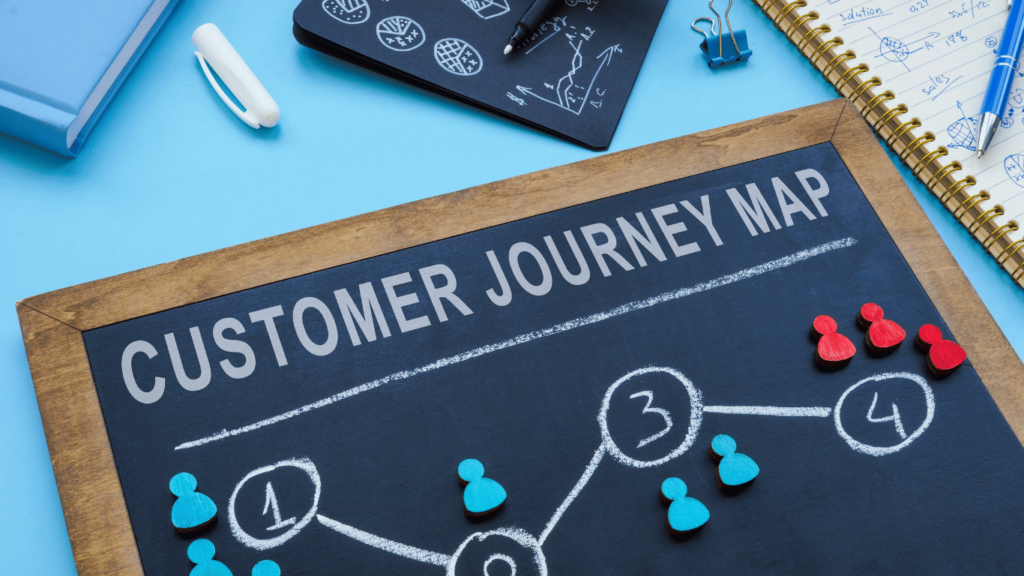
Speaking of mobile, optimize your onboarding process for mobile users (if applicable). After all, mobile devices account for 54.8% of global website traffic. You wouldn’t want to miss out on that huge chunk of potential customers and clients, right?
Example: If you offer a project management app, ensure that the onboarding process is smooth and intuitive on mobile devices. Clients should be able to create projects, assign tasks, and collaborate seamlessly from their smartphones or tablets.
Tip #11: Continuously test and refine your onboarding processes for better results
A/B testing is every company’s key ingredient for consistent success. Always assess the effectiveness of different SaaS client onboarding tools and approaches. Compare your findings and make strategic adjustments accordingly.
Example: When launching a new onboarding email series, create two variations (A and B) with slight differences in content or timing. Analyze which version performs better in terms of client engagement and conversion rates. Use the insights to refine your onboarding strategy.
Tip #12: Provide clients with a dedicated team to support them throughout their journey
Assign a dedicated client success team to proactively engage with your clients. Doing so will help your team understand your client’s unique challenges and provide timely assistance.
Example: Imagine a client signs up for your HR management software. Assign them a dedicated client success manager who understands their unique HR challenges and goals. This manager becomes their go-to resource for questions, guidance, and assistance, ensuring a highly personalized onboarding experience.
It’s time to set your sails for a smooth user onboarding experience

Smooth sailing in the world of SaaS client onboarding is not just a possibility; it’s a reality waiting to be embraced. The ultimate goal for optimizing your SaaS client onboarding process is to win over the loyalty of your clients.
Investing in strategies that help build customer loyalty right from the get-go will reward your company with long-term benefits. So don’t hesitate to dedicate a team that can help deliver and improve your new user onboarding process.
Are you still unsure how to start optimizing your SaaS onboarding experience with dedicated customer support agents? Book a free consultation with our experts and finally create the onboarding experience that will convert your new clients into loyal, paying customers now.
